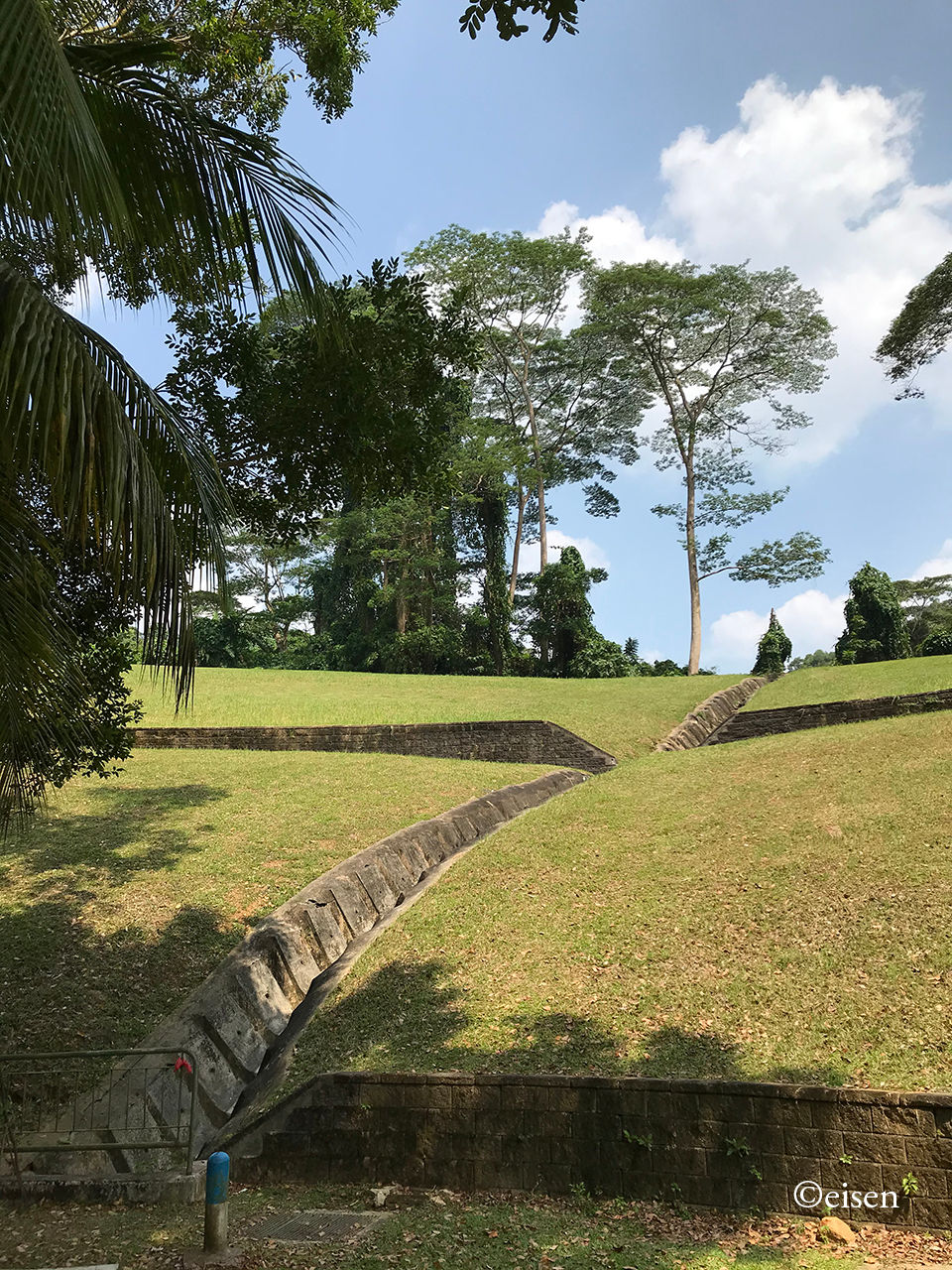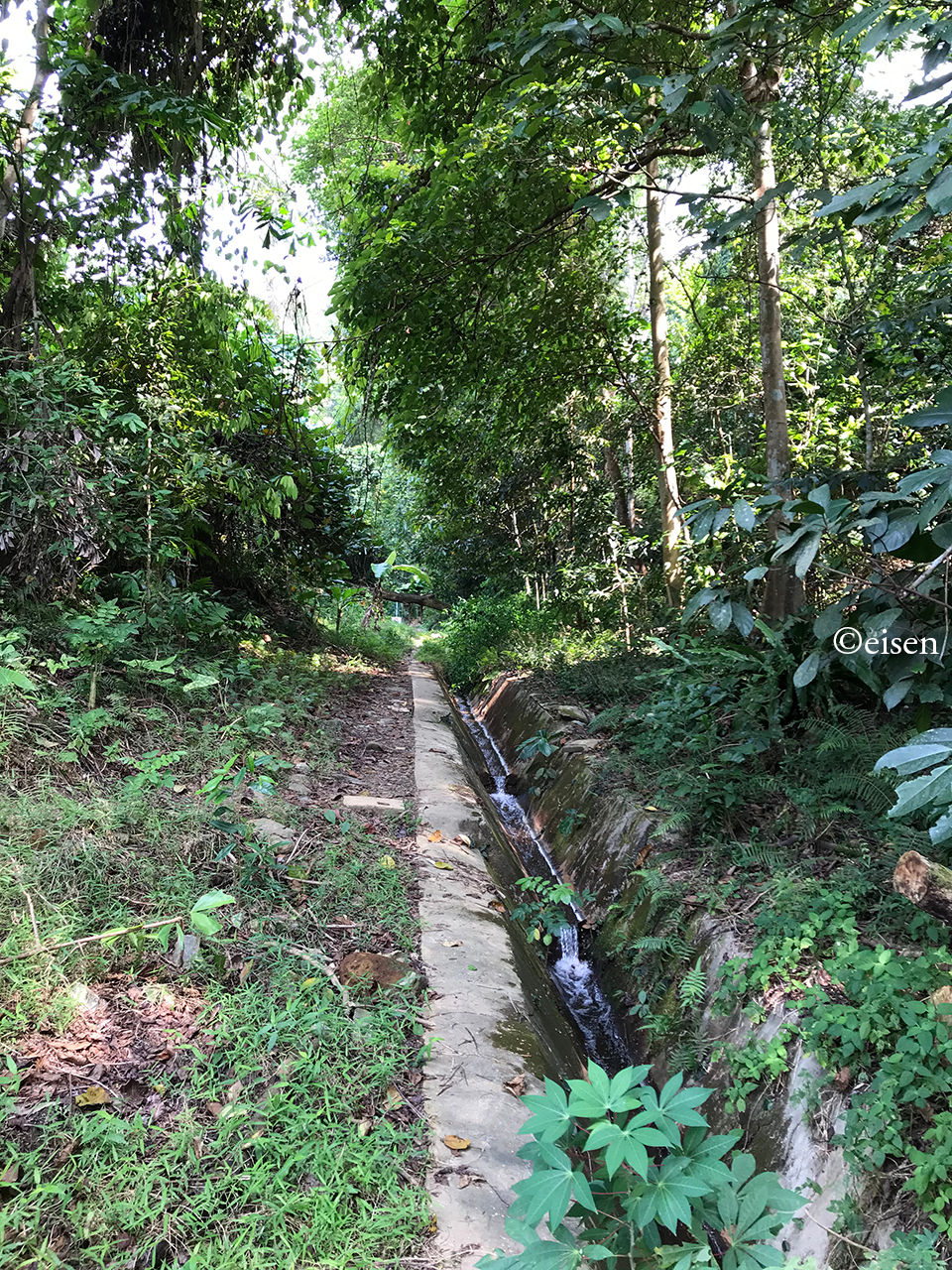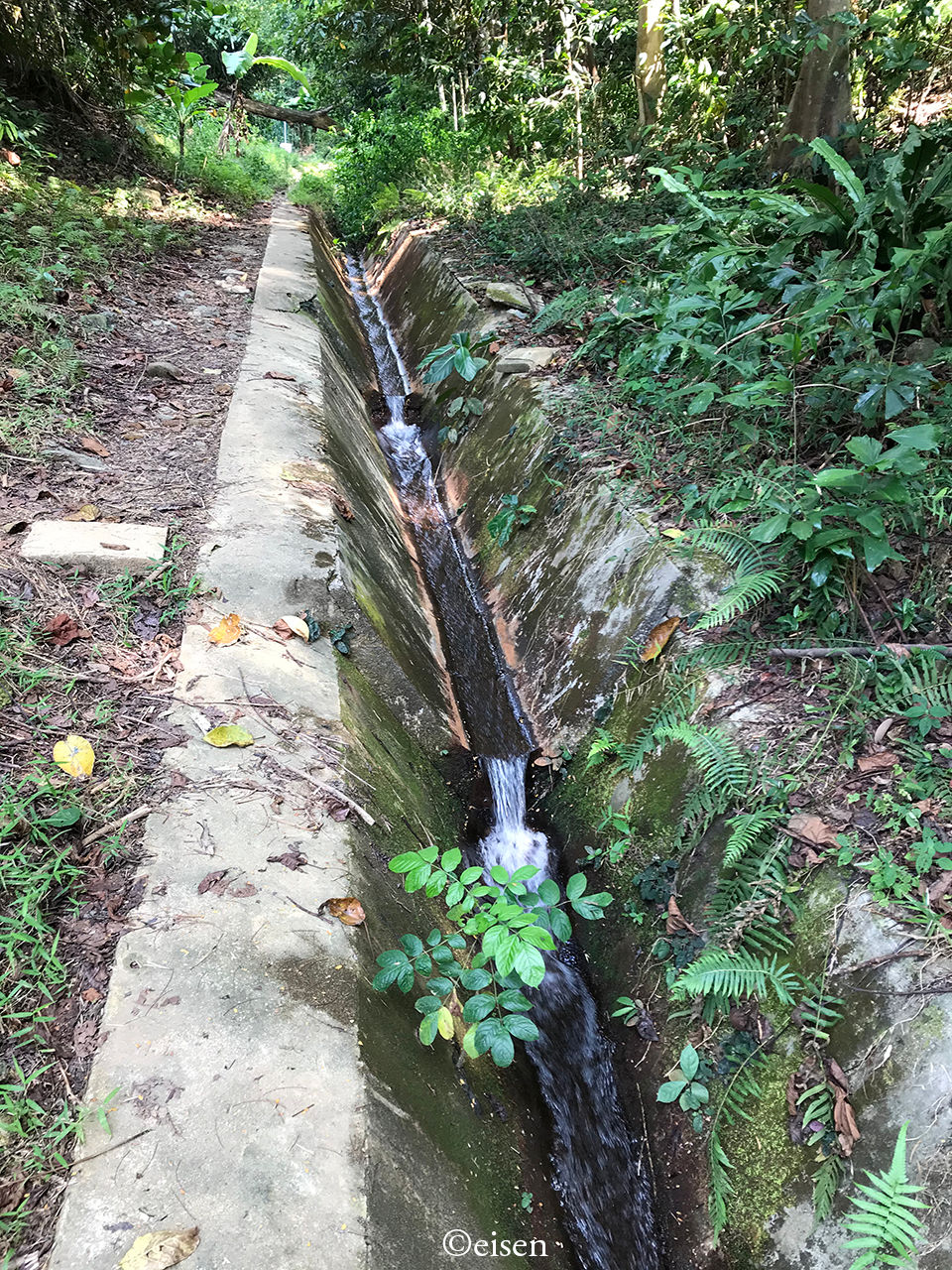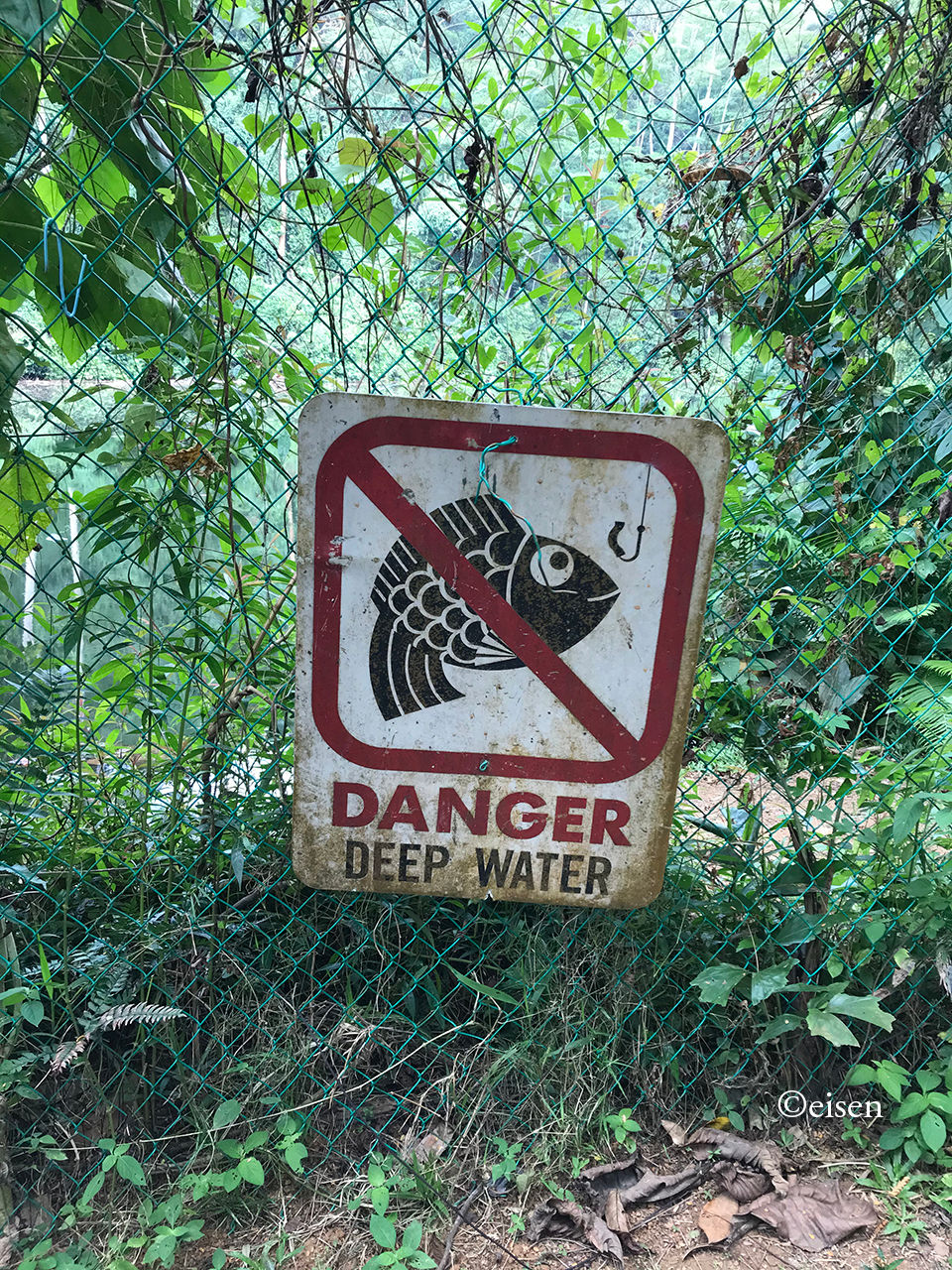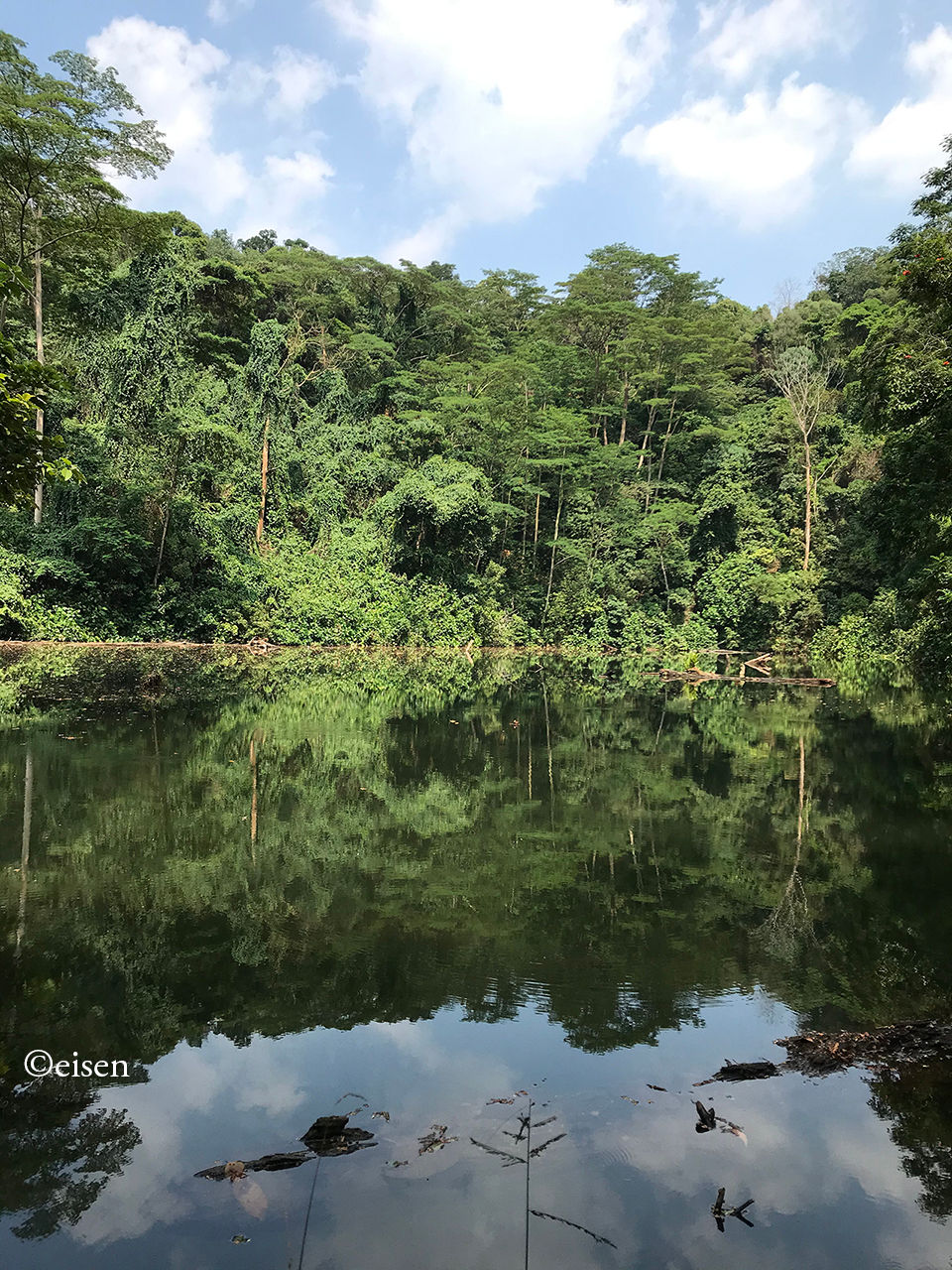- Jul 4, 2021
This is the junction of Upper Thomson Road, Sembawang Road, and Mandai Road - a geographical landmark that has existed for around 170 years.

The junction used to be far smaller, as the trunk roads were not as wide - they started out as single-lane dual carriageways, but were progressively widened to accommodate heavier vehicular traffic. Today, Upper Thomson Road-Sembawang Road is a three-lane dual carriageway, while this stretch of Mandai Road, a single-lane dual carriageway, meets the junction as a two-lane dual carriageway.
The junction in 1954, marked with a blue dot.

At the time, it was the heart of Nee Soon Village.

The junction in the 1940s, including a sign for Nee Soon Post Office, which served the eponymous village. I wish the old, classic signs were kept!

The same location today - the attap house behind the men is gone, replaced by trees, bushes, and grass.

The junction in 1975, marked with a blue dot. More roads in the area had been built and / or named, such as Transit Road, Chong Kuo Road, and Thong Bee Road.

The junction in 1976. Nee Soon Post Office was the building on the left, along Mandai Road. The two-storey concrete building on the right was more than a century old, owned by 71-year-old Soh Chee Kim.

Mr Soh outside his dwelling. Sadly, this lovely, historic building - which had been occupied by the Japanese as an operational headquarters during World War II - was soon demolished for the widening of Sembawang Road.

The same location today. Somehow, the area doesn’t look as rural anymore. Perhaps it is because some of the greenery has been trimmed.

Nee Soon Police Station used to be at the southwest corner of the junction, but it has also been demolished, and the former site taken up by road widening and the creation of a filter lane connecting Upper Thomson Road to Mandai Road.

Fortunately, Nee Soon Post Office, just slightly to the west of the police station, has survived.

Today, the post office has been converted to Mandai Pet Sanctuary, at 5 Mandai Road.








